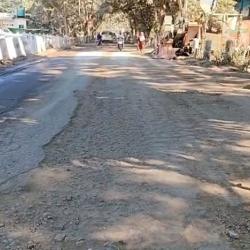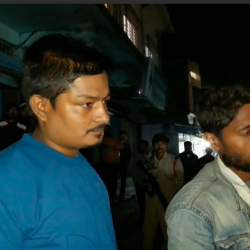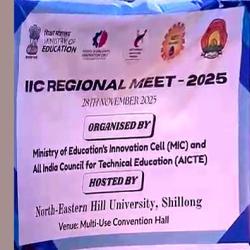In 2007, scholars, academicians, intellectuals, journalists, student bodies and members representing the civil society submitted a memorandum to the Prime Minister of India apprising him of the negative effects of Big Dams. It has since then cost a series of events, campaigns, protests, demonstrations and arrests to mobilze and drive home the point that describes well the imapct of Big Dams in the lower reaches.
Even as India ranks 5th in the world in terms of explotable hydro potential, Environment Minister Jayanthi Natarajan is confident of not constructing any dams on the Ganga. “...No dam is allowed to be built that lessens the flow or create problems to the lower riparian states,” she assured during a Lok Sabha debate in December 2011. But Gerukamukh and the people inhabiting either stretches of the River Brahmaputra are not lucky. Assam Chief Minister Tarun Gogoi is toeing the line between NHPCL and the Centre and is oblivious of his peoples' aspiration and resentment. He is confident that he will be able to demand a larger share of power and nevertheless believes that the $2 billion 2000 MW Lower Subansiri Hydel Project which was supposed to be completed by September 2010 is a dire need of the hour. In the process he buried under the carpet important factors like ecological imbalance and rehabilitation & resettlement.
According to Peter Bosshard, Policy Director at International Rivers, French export credit agency Coface provided $100 million in funding for Subansiri's turbine contract. According to official data, only 38 families will be displaced if the dam is completed. Yet the project will wreak havoc with the agriculture and rich ecosystems of the Subansisri and Brahmaputra floodplains. Meantime quarrying at Subansiri has already killed the elephant corridor along Assam-Arunachal Pradesh escalating man-elephant conflict.
The 60 MW Kurichu Dam overspill in 2011 submerged number of villages in Lower Assam and clogged the approaches to the Manas WildLife Santuary. The Government of Bhutan and its media however refutes this and earlier such occurances for reasons known best to them. On the other hand about 2/3rd of the Kaziranga National Park submerged with water fed from the River Brahmaputra that rose above the danger level at several places in Upper Assam devastating agricultural land. These are thin instances but the scenario of NHPCL backed dams underway is altogether different even citing the most advanced technological strides as cue. Big Dams harbor the capacity to change the entire demography of the State siting on Seismic Zone V whether it be for the absence of an adverse-effect fallback plan or taking into account the vagaries of climate change.
Climate change is likely to cause such changes in local and regional weather and climate patterns that would jeopardise dam operations and trigger more complex and intensive impacts downstream. It has been projected that Himalayan river basins like that of the Brahmaputra river may experience increased summer flows and more flooding for a few decades initially, due to rapid melting of Himalayan and Trans-Himalayan snow and glaciers according to Damming the Northeast India - a well documented paper brief by researchers Neeraj Vagholikar and Partha J Das.
GPS studies have shown that due to geodynamic processes (i.e., tectonic plate movements) different stress patterns have developed within the surface causing large magnitude earthquakes in the Himalayan region. Geoscientist have proved that large scale anthropogenic interventions by storing huge volume of water within the mountainous gorges can influence the plates and geodynamic movements. This corroborates what the tectonically active zone of Assam would hold in the future. The Northeast Himalayan region of India is one of the most seismically hazardous zones in South Asia according to the International Geographical Correlation Programme. As for downstream impacts the most common downstream effect of large dams is reduction of flood peaks, thereby reducing the frequency, extent and duration of floodplain inundation. Reduction of channel-forming flows reduces channel migration.
Assam in the very first place does not have an effective contingency plan in place for earthquakes where directives for constructing high rises is concerned. The capacity and claim to be able to avert situations arising due to dams is nothing less than sort of political shortsightedness in support of the Look East Policy. LEP pursues four broad objectives: reform and liberalisation, sustained rapid growth, regional economic integration and equity-based development. The LEP is seen as instrumental in addressing internal disparity in India’s development, and fostering more equity-based growth. The economic development of India’s seven north-eastern states in particular lags behind the nation’s development. They have felt neglected in terms of investment and government spending for some time. Through the LEP, India hopes that linking its north-eastern region with peninsula South-East Asia will kick-start economic development, and help the seven states to develop infrastructure, logistics, agrobusiness, trade, investment and other commercial activities. Trade with South-East Asia also has the potential to turn the region from land- locked to land-linked25, providing India with land routes to Burma, Thailand and other peninsular South-East Asian countries. While the LEP is an initiative from the central government, the seven north-eastern states are strong supporters of the policy. With all these and more Assam has not been able to prepare for a possible seismic disaster.
The issue is gathering steam because neither the State nor the Centre has been able to openly describe the measures under formulation to contain downstream impact for the 208 MW of the 2000 MW share earmarked for Assam as per the notification of the Union Ministry of Power. The excess 1792 MW is intended to be traded to power deficient states to help generate revenue much at the cost of environmental degradation and the people. The Electricity Act 2003 provides an option to the power producers to sell their electricity whereby they are not required to route their power through the State Electricity Boards.
In absence of the Central Dam Safety Organization as proposed in the Dam Safety Bill 2010, dam safety guidelines laid by the Central Water Commission escapes check. NHPCL in its Downstream Impact Study of the Ongoing Subansiri Lower Power Project at Gerukamukh Report vide clause 9 assures that study showed that the downstream of the river harbours a rich fish diversity (138 species) with other aquatic animals in abundance depicting the example of a good ecosystem. Any alteration of river flow and physico-chemical characteristics of water due to regulation of the river will have an adverse impact on the whole ecosystem and especially, migratory fish like mahseer and other giant cat fishes. Clause 10.2.2 Part-II of the Report states that even after redesigning of the dam, its operation will have many environmental and socio-economic problems in the downstream. To minimise the imapact 31 recommendations have been suggested to counter eventualities which seems to have vaporised now. The WAPCOS Demwe Project EIA on the other hand has been outrightly flayed and dismissed by the MoEF.
The downstream people will loose their habitats and trades - their agriculture and fishing for good. The Governments of Assam and India have chosen to gamble with its laws and natural resources and is itself in a catch 22 with a string of dams, big money half-spent and power profits at stake while regional, national and international anti-big dam bodies are closely watching. Its time Tarun Gogoi makes public how he proposes to protect a geography referred to as a Very High Damage Risk Zone by seismologists. He is pretty close to receive the study report from the Group of Ministers assigned for the purpose with about 50% of the dam completed.
- 9018 reads









Add new comment